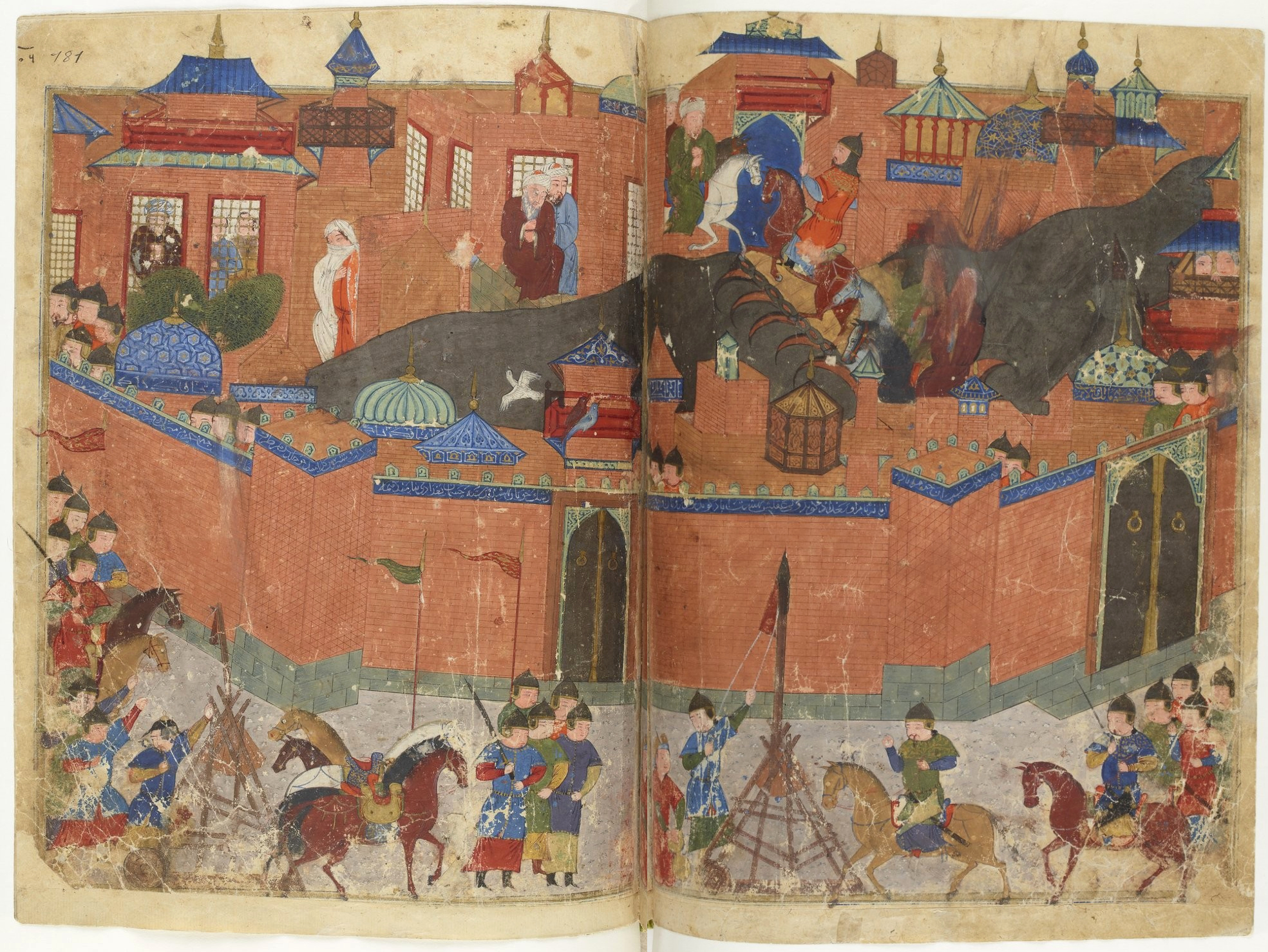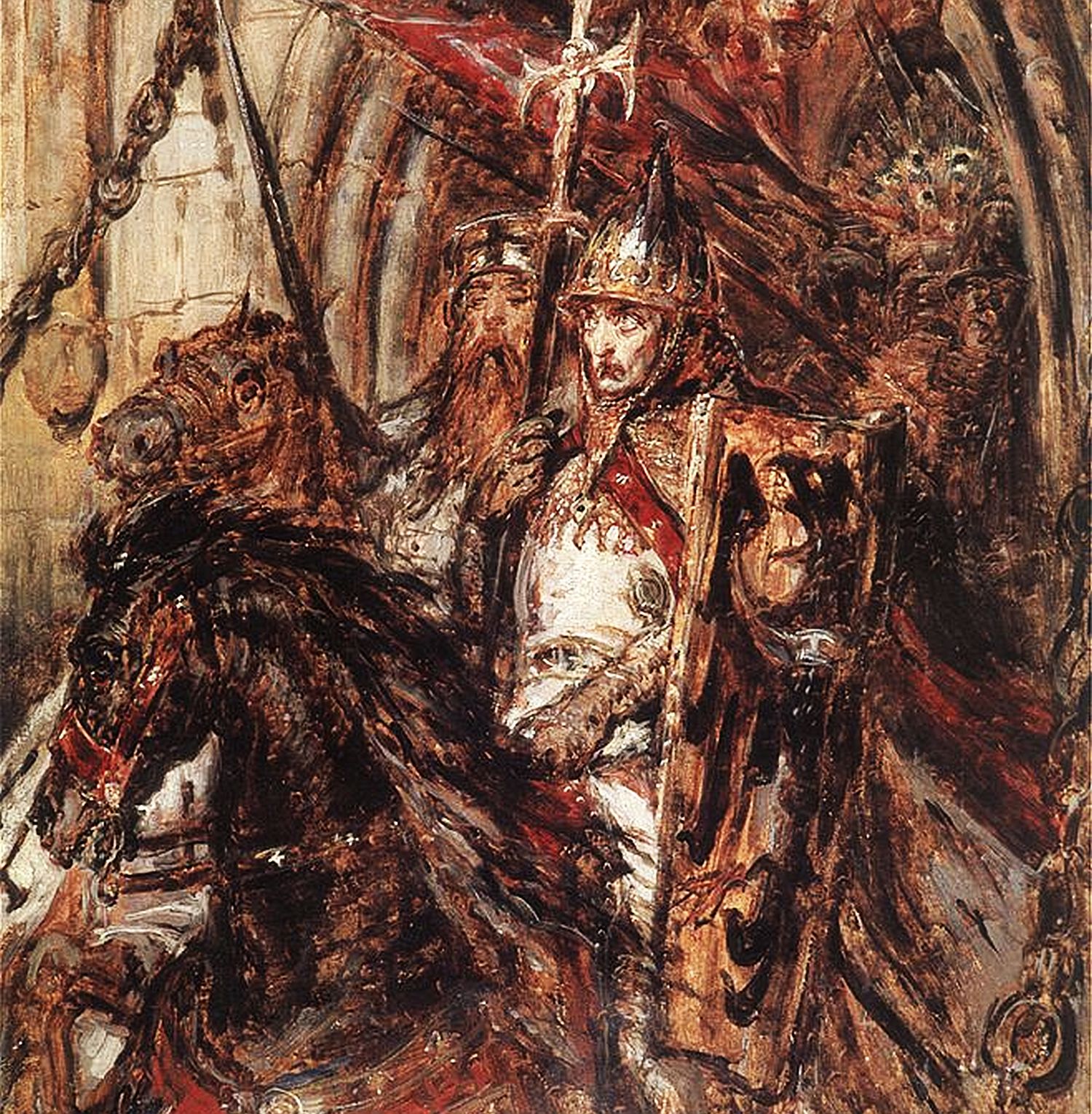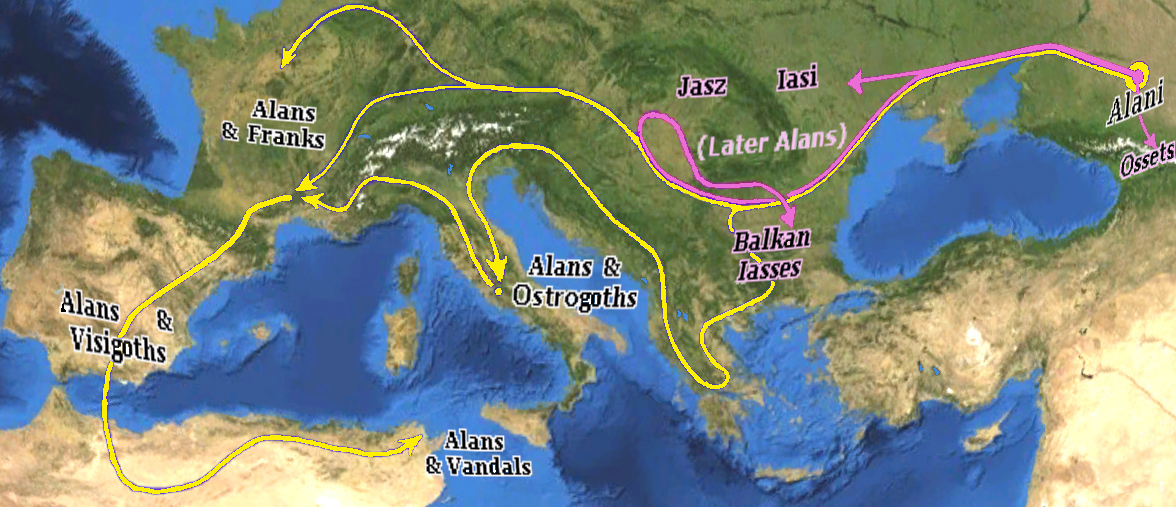|
Mongol Invasion Of Circassia
The Mongol invasion of Circassia and Alania refers to the invasion of Circassia and Alania by the Mongolian Empire. During the 13th and 14th centuries, the Mongols launched massive invasions of the territory of Circassia and Alania. William of Rubruck, who travelled to the Caucasus in 1253, wrote that the Circassians had never "bowed to Mongol rule", despite the fact that a whole fifth of the Mongol armies were at that time devoted to the task of crushing the Alano-Circassian resistance. Circassians and Alans made use of both the forests and the mountains, and waged a successful guerrilla war, maintaining their freedom to some extent. Prelude During what was the late Middle Ages of Western Europe, the Caucasus was invaded by Mongols and their Turkic vassals. The first appearance of Mongol troops in the Caucasus was an arrival of scouts between 1220 and 1222.Anchalabze, George. ''The Vainakhs''. Page 24 Kypchak Turkic peoples – some of which became future affiliates of Geng ... [...More Info...] [...Related Items...] OR: [Wikipedia] [Google] [Baidu] |
Mongol Invasions And Conquests
The Mongol invasions and conquests took place during the 13th and 14th centuries, creating history's largest contiguous empire, the Mongol Empire (1206–1368), which by 1260 covered large parts of Eurasia. Historians regard the destruction under the Mongol Empire, Mongol devastation as one of the deadliest episodes in history. At its height, the Mongol Empire included modern-day Mongolia, China, North Korea, South Korea, Myanmar, Iran, Iraq, Afghanistan, Pakistan, Kashmir, Kazakhstan, Tajikistan, Kyrgyzstan, Turkmenistan, Uzbekistan, Siberia, Georgia (country), Georgia, Armenia, Azerbaijan, Turkey, Belarus, Ukraine, Moldova, Romania, and most of European Russia. Overview The Mongol Empire developed in the course of the 13th century through a series of victorious campaigns throughout Eurasia. At its height, it stretched from the Pacific to Central Europe. It was later known as the largest contiguous land empire of all time. In contrast with later Thalassocracy, "empires of the ... [...More Info...] [...Related Items...] OR: [Wikipedia] [Google] [Baidu] |
Kuban River
The Kuban is a river in Russia that flows through the Western Caucasus and drains into the Sea of Azov. The Kuban runs mostly through Krasnodar Krai for , but also in the Karachay–Cherkess Republic, Stavropol Krai and the Republic of Adygea. The Kuban flows north and west from its source near Mount Elbrus in the Caucasus Mountains, eventually reaching Temryuk Bay in the Sea of Azov. It is navigable up to Krasnodar. Major cities on the river are Karachayevsk, Cherkessk, Nevinnomyssk, Armavir, Novokubansk, Kropotkin, Ust-Labinsk, Krasnodar and Temryuk. Despite its name, Slavyansk-on-Kuban lies not on the Kuban River, but on its distributary the Protoka. Geography and hydrology The river originates on the slopes of Mount Elbrus and forms at the merger of its two tributaries, the Ullukam and Uchkulam; from the source of the Ullukam to the delta, it has a length of . Between the source and Nevinnomyssk the river flows mostly in the deep and narrow gorge, has many th ... [...More Info...] [...Related Items...] OR: [Wikipedia] [Google] [Baidu] |
Wars Involving The Circassians
War is an armed conflict between the armed forces of State (polity), states, or between governmental forces and armed groups that are organized under a certain command structure and have the capacity to sustain military operations, or between such organized groups. It is generally characterized by widespread violence, destruction, and mortality, using Regular army, regular or Irregular military, irregular Military, military forces. ''Warfare'' refers to the common activities and characteristics of types of war, or of wars in general. Total war is warfare that is not restricted to purely legitimate military targets, and can result in massive Civilian casualty, civilian or other non-combatant suffering and Casualty (person), casualties. Etymology The English word ''war'' derives from the 11th-century Old English words and , from Old French ( as in modern French), in turn from the Frankish language, Frankish , ultimately deriving from the Proto-Germanic language, Proto-Ge ... [...More Info...] [...Related Items...] OR: [Wikipedia] [Google] [Baidu] |
1230s In The Mongol Empire
1 (one, unit, unity) is a number, numeral, and glyph. It is the first and smallest positive integer of the infinite sequence of natural numbers. This fundamental property has led to its unique uses in other fields, ranging from science to sports, where it commonly denotes the first, leading, or top thing in a group. 1 is the unit of counting or measurement, a determiner for singular nouns, and a gender-neutral pronoun. Historically, the representation of 1 evolved from ancient Sumerian and Babylonian symbols to the modern Arabic numeral. In mathematics, 1 is the multiplicative identity, meaning that any number multiplied by 1 equals the same number. 1 is by convention not considered a prime number. In digital technology, 1 represents the "on" state in binary code, the foundation of computing. Philosophically, 1 symbolizes the ultimate reality or source of existence in various traditions. In mathematics The number 1 is the first natural number after 0. Each natural numbe ... [...More Info...] [...Related Items...] OR: [Wikipedia] [Google] [Baidu] |
Mongol Invasion Of Europe
From the 1220s to the 1240s, the Mongol Empire, Mongols conquered the Turkic peoples, Turkic states of Volga Bulgaria, Cumania and Iranian peoples, Iranian state of Alania, and various principalities in Eastern Europe. Following this, they began their invasion into Central Europe by launching a two-pronged invasion of History of Poland during the Piast dynasty, then-fragmented Poland, culminating in the Battle of Legnica (9 April 1241), and the Kingdom of Hungary (1000–1301), Kingdom of Hungary, culminating in the Battle of Mohi (11 April 1241). Invasions were also launched into the Caucasus against the Kingdom of Georgia, the Chechens, the Ingush people, Ingush, and Circassia though they Mongol invasion of Circassia, failed to fully subjugate the latter. More invasions were launched in Southeast Europe against Second Bulgarian Empire, Bulgaria, Croatia in personal union with Hungary, Croatia, and the Latin Empire. The operations were planned by General Subutai (1175–1248) and ... [...More Info...] [...Related Items...] OR: [Wikipedia] [Google] [Baidu] |
Mongol Invasions Of Georgia And Armenia
The Mongol invasions of Georgia ( ka, მონღოლთა ლაშქრობები საქართველოში, tr), which at that time consisted of Georgia proper, Armenia, and much of the Caucasus, involved multiple invasions and large-scale raids throughout the 13th century. The Mongol Empire first appeared in the Caucasus in 1220 as generals Subutai and Jebe pursued Muhammad II of Khwarezm during the destruction of the Khwarezmian Empire. After a series of raids in which they defeated the combined Georgian and Armenian armies,"Early Ukraine: A Military and Social History to the Mid-19th Century" By Alexander Basilevsky Subutai and Jebe continued north to invade Kievan Rus'. A full-scale Mongol conquest of the Caucasus and eastern Anatolia began in 1236, in which the Kingdom of Georgia, the Sultanate of Rum, and the Empire of Trebizond were subjugated, the Armenian Kingdom of Cilicia and other Crusader states voluntarily accepted Mongol vassalage, and t ... [...More Info...] [...Related Items...] OR: [Wikipedia] [Google] [Baidu] |
Mongol Invasions Of Durdzuketi
Throughout the 13th and 14th centuries, the ancestors of the Vainakh people, the Durdzuks, among different states and factions, waged a brutal and fierce defensive wars against the Mongol Empire, who sought to occupy the lands of the Vainakh. Despite the inferiority in numbers and weapons, the Durdzuks managed to mostly keep their independence, although this came at a heavy cost, as their resistance resulted in mass amounts of death among the Durdzuks and the destruction of their states, but also greatly shaped the people they would later become. The access to the lowlands was also lost, thus forcing the Durdzuks to adapt to their new situation, such as terracing plots of land and covering them in soil. The Sado-Orsoy dynasty, a clan which had been ruling the medieval Nakh state known as "Durdzuketi" in Georgian sources, was also driven to near extinction. Due to their constant resistance, at the end of the third Mongol campaign in 1240, an active result of heirs began, after whi ... [...More Info...] [...Related Items...] OR: [Wikipedia] [Google] [Baidu] |
Batu Khan
Batu Khan (–1255) was a Mongol ruler and founder of the Golden Horde, a constituent of the Mongol Empire established after Genghis Khan's demise. Batu was a son of Jochi, thus a grandson of Genghis Khan. His '' ulus'' ruled over the Kievan Rus', Volga Bulgaria, Cumania, and the Caucasus for around 250 years. Personality and appearance According to Giovanni da Pian del Carpine, Batu was "kind enough to his own people, but he is greatly feared by them. He is, however, most cruel in fight; he is very shrewd and extremely crafty in warfare, for he has been waging war for a long time." He received the nickname of сайн (), by which he was referred to by Marco Polo. William of Rubruck described him as about the height of his lord John de Beaumont and as having his entire face covered with reddish spots. Early years After his son Jochi's death, Genghis Khan assigned Jochi's appanages to his sons. The Great Khan installed Batu as Khan of the Golden Horde (also known as t ... [...More Info...] [...Related Items...] OR: [Wikipedia] [Google] [Baidu] |
Sartaq Khan
Sartaq Khan' (or Sartak, Sartach, , ; died 1257) was the son of Batu Khan and his senior wife Boraqchin of Alchi Tatar.Rashid al-Din - Universal History, see: ''Tale of Jochids'' Boraqchin acted as regent Dowager before Sartaq eventually succeeded Batu as the khan of the Golden Horde. Reign In 1252, Alexander Nevsky met with Sartaq at Sarai. Alexander received ''yarlyk'' (license) to become Grand Duke of Vladimir in vassalage to the Mongol Khanate. According to Lev Gumilev he became Sartaq's ''anda'' (sworn brother, akin to blood brother) and an adopted son of Batu Khan. His reign as khan of the Golden Horde was short-lived. He died in 1256 before returning from Great Khan Möngke's court in Mongolia, less than one year after his father, probably having been poisoned by his uncles Berke and Berkhchir. Sartaq was succeeded by Ulaqchi briefly in 1257, before his uncle Berke Berke Khan (died 1266/1267; also Birkai; Turki/ Kypchak: برکه خان, , ) was a grand ... [...More Info...] [...Related Items...] OR: [Wikipedia] [Google] [Baidu] |
Kingdom Of France
The Kingdom of France is the historiographical name or umbrella term given to various political entities of France in the Middle Ages, medieval and Early modern France, early modern period. It was one of the most powerful states in Europe from the High Middle Ages to 1848 during its dissolution. It was also an early French colonial empire, colonial power, with colonies in Asia and Africa, and the largest being New France in North America geographically centred around the Great Lakes. The Kingdom of France was descended directly from the West Francia, western Frankish realm of the Carolingian Empire, which was ceded to Charles the Bald with the Treaty of Verdun (843). A branch of the Carolingian dynasty continued to rule until 987, when Hugh Capet was elected king and founded the Capetian dynasty. The territory remained known as ''Francia'' and its ruler as ('king of the Franks') well into the High Middle Ages. The first king calling himself ('King of France') was Philip II of Fr ... [...More Info...] [...Related Items...] OR: [Wikipedia] [Google] [Baidu] |
Alans
The Alans () were an ancient and medieval Iranian peoples, Iranic Eurasian nomads, nomadic pastoral people who migrated to what is today North Caucasus – while some continued on to Europe and later North Africa. They are generally regarded as part of the Sarmatians, and possibly related to the Massagetae. Modern historians have connected the Alans with the Central Asian Yancai of China, Chinese sources and with the Aorsi of Ancient Rome, Roman sources. Having migrated westwards and becoming dominant among the Sarmatians on the Pontic–Caspian steppe, the Alans are mentioned by Roman sources in the . At that time they had settled the region north of the Black Sea and frequently raided the Parthian Empire and the South Caucasus provinces of the Roman Empire. From the Goths broke their power on the Pontic Steppe, thereby assimilating a sizeable portion of the associated Alans. Upon the Huns, Hunnic defeat of the Goths on the Pontic Steppe around , many of the Alans migrated w ... [...More Info...] [...Related Items...] OR: [Wikipedia] [Google] [Baidu] |




